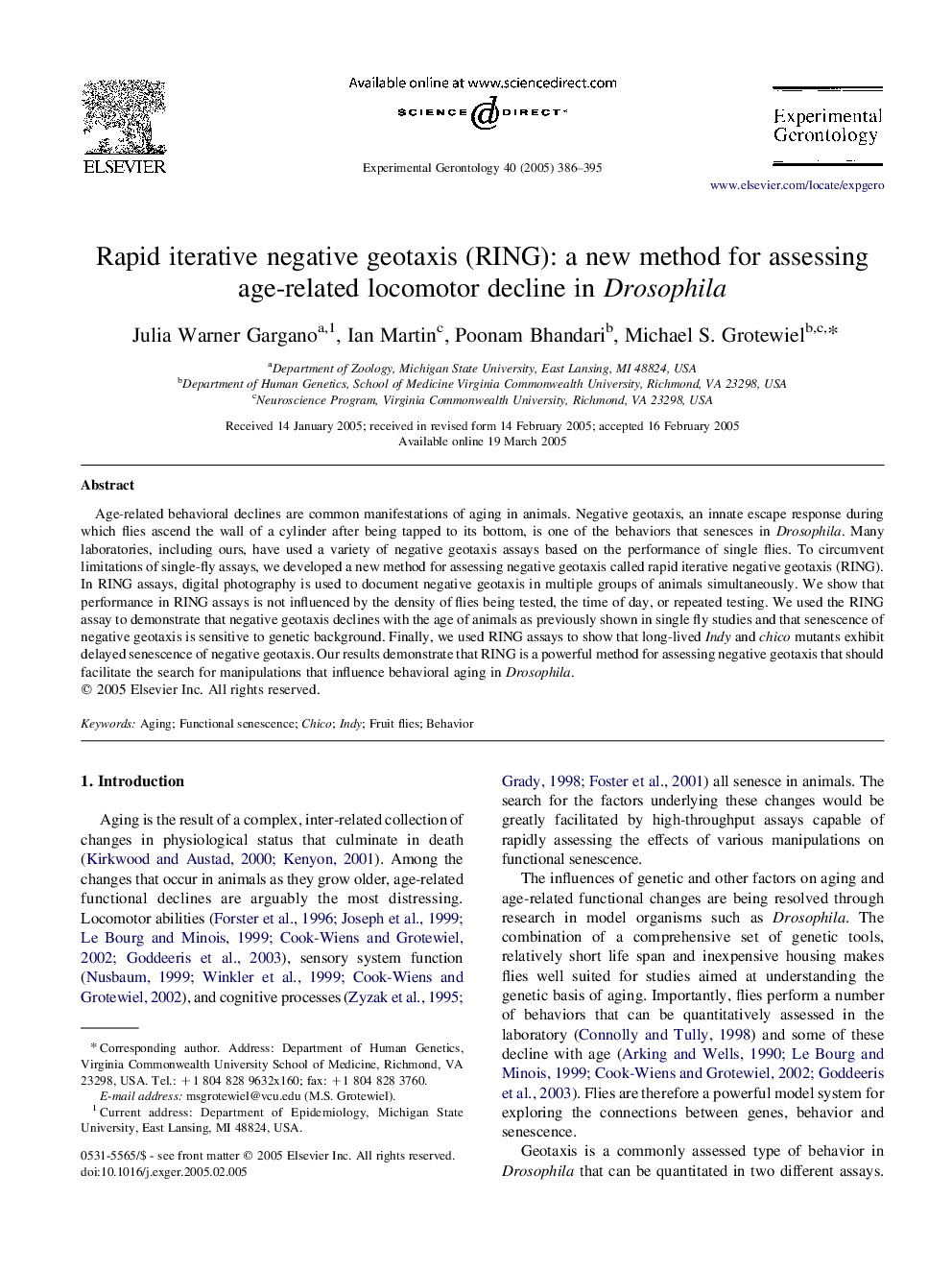| Article ID | Journal | Published Year | Pages | File Type |
|---|---|---|---|---|
| 10737280 | Experimental Gerontology | 2005 | 10 Pages |
Abstract
Age-related behavioral declines are common manifestations of aging in animals. Negative geotaxis, an innate escape response during which flies ascend the wall of a cylinder after being tapped to its bottom, is one of the behaviors that senesces in Drosophila. Many laboratories, including ours, have used a variety of negative geotaxis assays based on the performance of single flies. To circumvent limitations of single-fly assays, we developed a new method for assessing negative geotaxis called rapid iterative negative geotaxis (RING). In RING assays, digital photography is used to document negative geotaxis in multiple groups of animals simultaneously. We show that performance in RING assays is not influenced by the density of flies being tested, the time of day, or repeated testing. We used the RING assay to demonstrate that negative geotaxis declines with the age of animals as previously shown in single fly studies and that senescence of negative geotaxis is sensitive to genetic background. Finally, we used RING assays to show that long-lived Indy and chico mutants exhibit delayed senescence of negative geotaxis. Our results demonstrate that RING is a powerful method for assessing negative geotaxis that should facilitate the search for manipulations that influence behavioral aging in Drosophila.
Related Topics
Life Sciences
Biochemistry, Genetics and Molecular Biology
Ageing
Authors
Julia Warner Gargano, Ian Martin, Poonam Bhandari, Michael S. Grotewiel,
